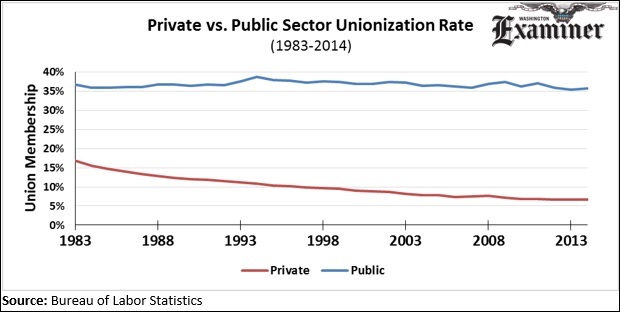Union membership fell to 11.1 percent of all employees in 2014, down from 11.3 percent in 2013. The decline continues a decades-long trend of unionization decline, down from 20.1 percent in 1983, the earliest directly comparable data.
The total number of union members rose by 48,000 in 2014, to 14.6 million. However, the total number of union members is still 3.1 million lower than in 1983, even though 43 million more people are now employed.
The public and private sectors continue to show stark differences in unionization. Just 6.6 percent of private sector employees are unionized, compared to 35.7 percent of public sector employees. Private sector unionization fell by 0.1 percentage points in 2014, while public sector unionization actually rose by 0.4 percent. There are now 4.6 million fewer private sector union members today than in 1983.
The public sector now has 1.5 million more union members than in 1983. During that time total public sector employment rose by 4.6 million workers.
The rise in public sector unionization has been concentrated at the local government level. The federal and local unionization rates rose by 1 and 1.1 percentage points in 2014, but there are 4.7 times as many local government union members as there are federal employee union members. Local government employees are 41.9 percent unionized, compared to 29.8 percent at the state level and 27.5 percent at the federal level. State unionization fell by 1.1 percentage points in 2014. Total union membership rose by 7,000 at the federal level in 2014, compared to 101,000 at the local level. State-level union membership fell by 99,000.
The Bureau of Labor Statistics released its annual summary of union members on Friday.

